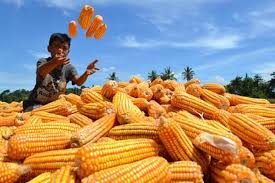Indonesia aims to achieve corn self-sufficiency by 2026, a bold target to reduce import dependency and strengthen its agricultural sector. As one of the staple commodities in Indonesia’s food and livestock industries, corn plays a crucial role in ensuring national food security. However, experts highlight various challenges that must be addressed for this ambitious goal to become reality. This article explores Indonesia’s corn self-sufficiency target, the obstacles identified by agricultural specialists, and the strategies needed to overcome these issues.
The Importance of Indonesia Corn Self-Sufficiency 2026
Corn is a vital crop in Indonesia, supporting not only direct food consumption but also the animal feed industry. Currently, Indonesia still relies on significant corn imports to meet domestic demand, which affects trade balances and exposes the country to global market fluctuations.
Achieving Indonesia corn self-sufficiency 2026 means boosting local production to meet national consumption needs. This will reduce reliance on imports, stabilize prices, and increase farmers’ income. The government has introduced various incentives, including subsidies, improved seeds, and farming technologies, to encourage higher corn yields.
Moreover, self-sufficiency aligns with Indonesia’s broader vision of strengthening food sovereignty and rural development, particularly in major corn-producing regions such as East Nusa Tenggara and South Sulawesi.
Challenges Hindering Indonesia Corn Self-Sufficiency 2026
Despite strong government support, several critical challenges remain. Experts warn that without addressing these issues, the Indonesia corn self-sufficiency 2026 target could be missed.
1. Limited Agricultural Infrastructure
Inadequate irrigation, storage, and transportation infrastructure limit farmers' productivity and increase post-harvest losses. Many rural areas lack modern facilities, which hampers efficient corn production and distribution.
2. Quality of Seeds and Farming Practices
Although improved seed varieties are available, adoption rates remain low. Traditional farming methods dominate, resulting in lower yields compared to potential production capacity.
3. Land Use and Environmental Concerns
Corn farming requires considerable land, which sometimes leads to conflicts with other agricultural uses or environmental degradation. Sustainable farming practices need to be promoted to balance productivity with environmental protection.
4. Climate Change and Weather Variability
Indonesia faces increasing climate risks such as droughts and floods that affect corn crops. Climate-smart agriculture techniques must be integrated into farming systems to mitigate these risks.
Strategies and Solutions to Achieve Indonesia Corn Self-Sufficiency 2026
To overcome the challenges, experts suggest a multi-faceted approach that includes technology, policy reforms, and farmer empowerment.
1. Strengthening Agricultural Infrastructure
Investment in irrigation systems, cold storage, and transport networks is essential to reduce losses and improve supply chain efficiency.
2. Promoting Modern Farming Technologies
Encouraging the use of high-quality seeds, fertilizers, and mechanized farming can increase yield per hectare significantly.
3. Sustainable Land Management
Implementing agroforestry, crop rotation, and soil conservation techniques can help maintain land fertility and reduce environmental damage.
4. Climate Adaptation Measures
Training farmers on climate-resilient crops and better water management can safeguard production from weather uncertainties.
5. Enhancing Farmer Access to Finance and Markets
Providing affordable credit and market access helps farmers invest in productivity-enhancing inputs and sell their harvests profitably.
Conclusion
Indonesia’s ambition to achieve corn self-sufficiency by 2026 is an important step toward food security and agricultural resilience. However, realizing this goal requires coordinated efforts from the government, private sector, and farmers themselves. Addressing infrastructure gaps, promoting modern agricultural practices, and adapting to climate challenges are crucial for success. With sustained commitment, Indonesia can reduce its dependence on corn imports and strengthen the livelihoods of its farming communities.
Read More






 Monday, 03-11-25
Monday, 03-11-25







